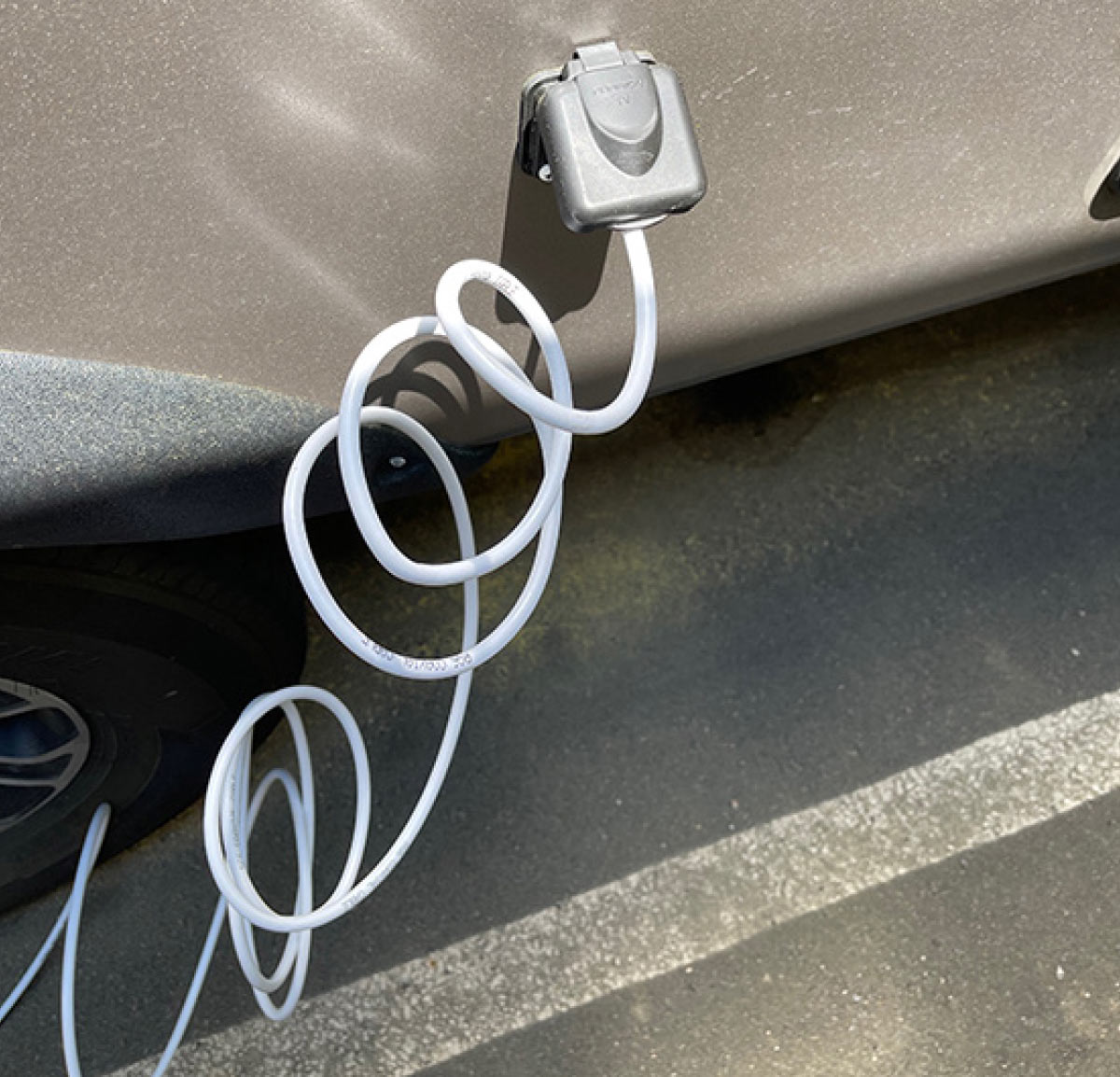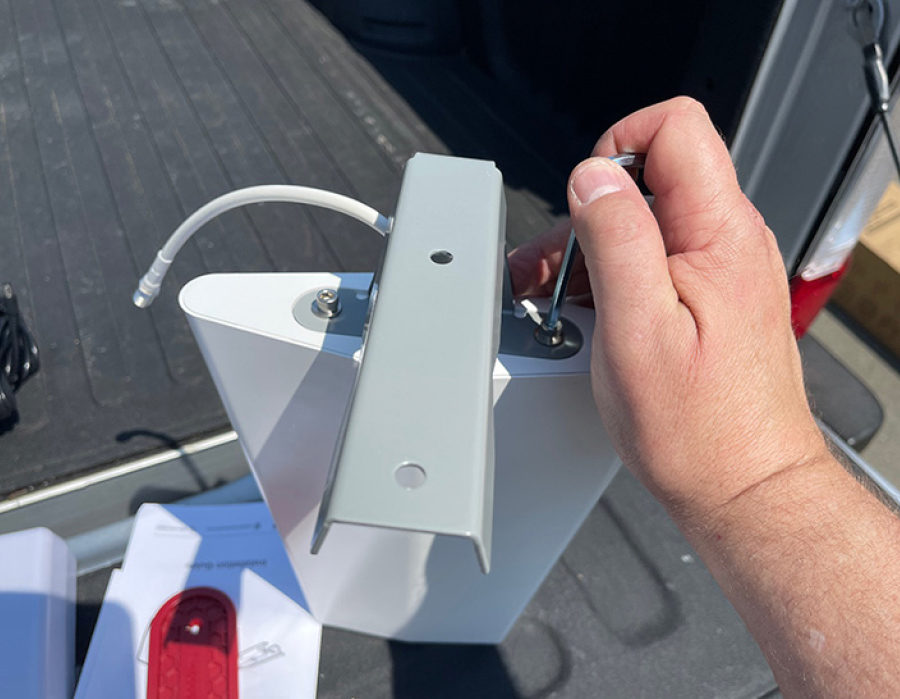
Photos by Karen Dougherty
t’s amazing how far cellular data and communications have come over the last decade. So much of the continent is peppered with cell sites, there are fewer places where cellular connectivity can’t be found than where they can be. However, just because your device shows there’s service available doesn’t mean it’s usable service. For those of us who work on the road, a solid digital connection is truly essential. To help with that, Wilson Electronic’s weBoost cellular repeaters for vehicles and RVs should be considered essential gear.
To be fair, cellular repeaters are not a panacea for all connectivity problems. Having installed and tested many of these units over the years, I have found that there are times when the improvement is minimal — or even times when the booster is actually detrimental to cellular operation. Knowing when to use a booster is just as important as determining what system to select.
What is Cellular Telephony?
Since the late 1980’s, cellular telephones have revolutionized the way we communicate, gather data and live our lives. But what is a cellular network and how does it work?
In a basic sense, cell sites are linked regionally to a base station with computers that make the connection possible. Similar to a regional emergency service repeater system, the system is accessed through a digital handset. The base station decides which cell site is the strongest and routes the call while continually re-evaluating that signal from site to site. Of course, it’s more complicated than that — systems also have to avoid frequency overlap, interference and so on — but this is the gist of it. Over the years, the cellular system has become smarter and is able to route your calls seamlessly from cell-to-cell, usually without dropping the call, but there are still times when it doesn’t work as it should.

As time progressed and the need for data communications increased, the cellular network became the perfect platform to develop for mobile internet access. Cellular has always been digital, so the ability to send and receive packets of data has been part of the foundation of the system. But as digital data has risen to the level it is today, having a solid connection is critical to avoid data errors. The greater the signal loss, the slower and more error prone the connection.


Many things have changed over the years to improve the cellular experience. As the cost of installing cellular base stations and equipment dropped, more systems have been installed — which improves coverage. The technology also has advanced tremendously, and additional frequency allocations have allowed the systems to be denser, further improving service (more cellular site installations often mean one is close enough to connect to). Speeds have increased as the technology has improved, with 5G systems being the top tier options.
The problem with in-vehicle cellular use is the interference the vehicle’s body inflicts on the signal. Remember, the strength of the connection is dependent on two-way communication. While a cell site may have plenty of power to broadcast through vehicle glass and RV building materials, the return signal by a handset may not be strong enough to effectively bust through to contact the cell site for a useful connection.
This is where cellular boosters, or repeaters, are beneficial. With a distant cell site, the booster is powerful enough to complete the connection with little or no loss by converting and boosting the signal between the device and tower.
That said, cellular boosters may not work in every situation. It’s important to always “test drive” your devices before activating a booster. If your devices work without the aid of the booster, activating the booster may actually degrade the connection. But while the signal represented on a device’s screen may not improve with the use of the booster, you will have a usable connection versus an unreliable one.
The Destination RV Booster System
weBoost’s new Destination RV booster system brings some notable improvements to the connected traveler, which catapult it to the top of the list for power and ability. The newest system from Wilson electronics, the Destination RV ($649.95 MSRP) offers 5G capability and a maximum gain of 65dB in comparison to the 50dB of the company’s Connect RV 65 system.
Unlike the weBoost vehicle-mounted units, the Destination RV and its predecessor, the Connect RV 65, utilize a 25-foot tower that is clipped to the side of the RV to hold and aim a directional antenna that is pointed towards the closest tower for your provider. Finding that tower can be done manually, turning the antenna until it works best, or you can download a smart-device app (of course) to help locate towers from all providers. One such app we found for Apple iOS is Find Tower.
The accompanying images detail the installation of a Destination RV system on a Montana fifth wheel. During installation, we realized owners should consider permanently installing the system, using a CATV input jack on the RV for the cable connection. This is a much better solution than feeding the cable through a window or slideout seal — it will make set up much easier and quicker. Also, be sure to follow the directions for antenna separation carefully. Know, too, that when collapsed, the antenna tower — which is a telescoping RV flag pole — fits neatly in a pass-through compartment, but won’t fit in a standard storage compartment.


There’s no question that having to set up and aim the antenna requires extra time and effort versus the vehicle-based models, but the increase in reception is worth it — especially if you’re working and parked for a while. The initial installation takes a few hours when making it more permanent, (depending on the RV), but setup at the campsite takes maybe 10 minutes. As with all Wi-Fi routers and access points, it is recommended to shut the unit off before disconnecting the antenna or traveling.






Source:

